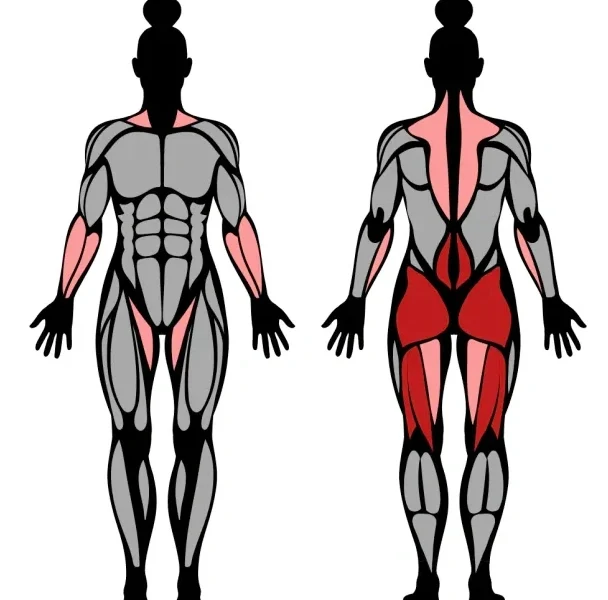Countless athletes and fitness enthusiasts focus heavily on the quads, hamstrings, and glutes, while those crucial inner thigh muscles – the adductors – often get left in the dust. Let me tell you, weak adductors aren’t just a missed opportunity; they’re a recipe for instability, limited mobility, and even injury down the line. To truly build balanced leg strength, bulletproof your hips, and unlock smoother movement, we need to give these muscles the attention they deserve. That means incorporating adductor muscles training exercises specifically designed to make them work – pulling your legs together against resistance. Think hip adduction machines, resistance bands, and dynamic moves like side lunges. Even big lifts like squats and deadlifts chip in when done right. Ready to build a stronger foundation? Let’s dive in and target those inner thighs properly.
1. What Are The Adductor Muscles
.jpg)
- The “Inner Thigh” Crew: It’s not just one muscle! We’re talking about a team of five main muscles: the Adductor Magnus (the biggest powerhouse), Adductor Longus, Adductor Brevis, Pectineus, and Gracilis. They run down from your pelvis to your thigh bone (femur).
- Their #1 Job: Adduction: The name says it all! Their primary function is adduction – pulling your leg inward, towards the midline of your body. Picture squeezing a soccer ball between your knees – that’s pure adductor action.
- Way More Than Just Squeezing: Don’t underestimate them! Strong adductors are critical stabilizers. They anchor your hips and pelvis, especially during single-leg moves (like lunges or running) or any side-to-side action. They’re the silent partners working with your glutes and core to keep you balanced and powerful.
- The Hidden Players in Big Lifts: Ever wonder what helps keep you stable at the bottom of a heavy squat or deadlift? Yep, your adductors! They engage significantly during these compound movements to control the descent and power the ascent.
- Weakness = Problems: I see it all the time: neglected adductors lead to trouble. Weakness causes hip instability, limits mobility (especially getting deep in squats), can contribute to knee issues (like valgus collapse – knees caving in), and makes lateral movements (side shuffles, cutting) feel shaky and inefficient. Tight adductors are just as problematic, restricting range of motion.
- Everyday Movement Heroes: It’s not just about the gym! Walking, climbing stairs, getting out of your car – your adductors are constantly working to stabilize your stride and pelvis. Strong adductors mean smoother, more confident movement in daily life.
2. 6 Adductor Muscles Training
2.1 Sumo Squats
This wide-stance powerhouse isn’t just a glute builder; it’s a phenomenal adductor activator. By taking your feet wider than shoulder-width and pointing your toes out, you significantly increase the demand on your inner thighs as you sink down and drive back up. It builds functional strength essential for overall lower body power and stability.
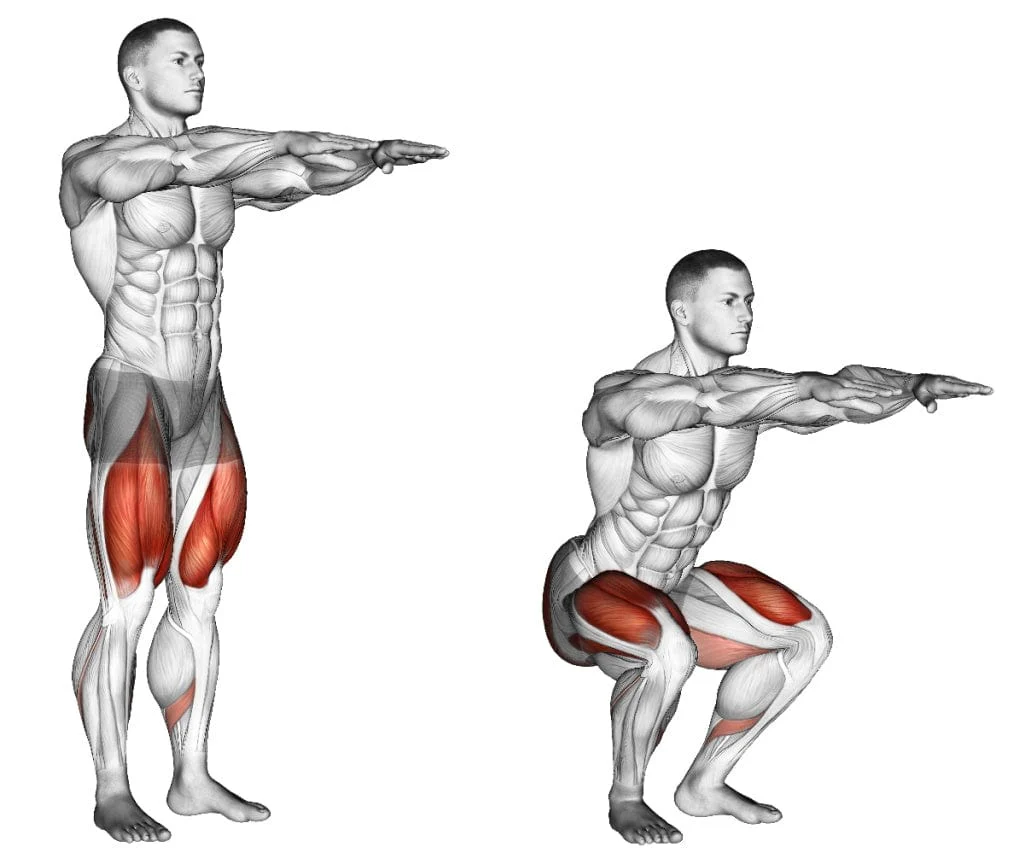
- How to Do:
- Plant your feet way wider than shoulder-width, toes flared out comfortably (around 45 degrees).
- Keep your chest proud and your core braced tight like you’re about to take a punch.
- Push your hips back and bend your knees, lowering yourself down. Aim to get your thighs at least parallel to the floor – go deeper if your mobility allows without compromising form.
- Drive powerfully through your entire foot, especially the heels and outer edges, feeling your inner thighs and glutes engage hard to stand tall again.
- Control the descent – don’t just drop! And keep those knees tracking over your toes, not caving in.
2.2 Hip Adduction Machine
This machine is the purest isolation work for your adductors you’ll get. It allows you to directly target the inner thigh muscles with controlled resistance, perfect for building strength and muscle endurance specifically in that area. Great for beginners learning the mind-muscle connection or anyone wanting focused work.
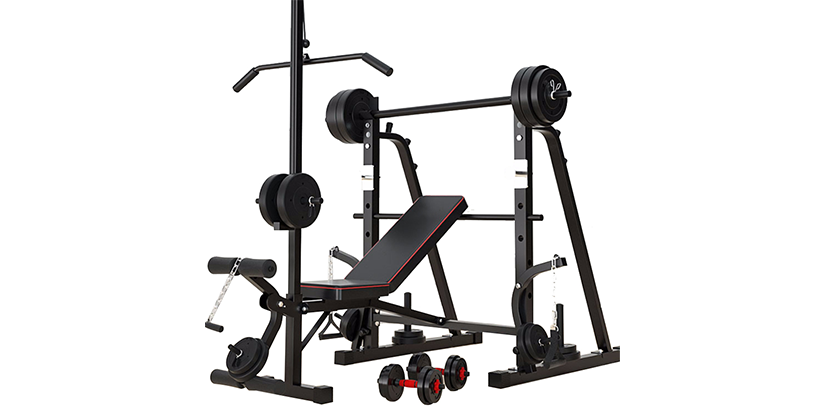
- How to Do:
- Sit down and adjust the machine so the pads rest comfortably on the inside of your knees or thighs (depending on the machine design).
- Set a manageable weight. We’re going for controlled reps, not ego lifting.
- Start with your legs slightly apart. Now, slowly and deliberately squeeze your legs together against the resistance, focusing intensely on feeling those inner thigh muscles contract.
- Hold the squeeze for a brief second at the peak – really make them work!
- Resist the weight all the way back to the starting position with control. Don’t let the weight stack slam down. Slow and steady wins this race.
2.3 Cossack Squats
This dynamic move is a game-changer for adductor strength, flexibility, and hip mobility all in one. It challenges your inner thighs through a deep stretch and powerful contraction as you shift your weight side-to-side. It looks tough, and it is, but it pays off massively for functional movement.
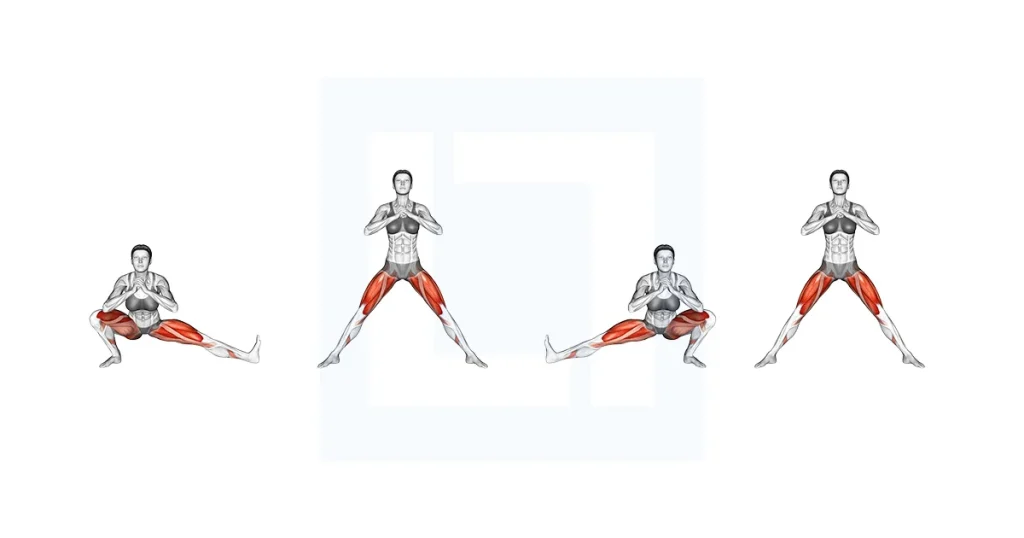
- How to Do:
- Start super wide, feet much wider than shoulder-width, toes pointed slightly out.
- Shift your weight dramatically over to your right leg, bending the right knee deeply while keeping your left leg straight. Your left foot stays flat on the floor, heel down.
- Keep your torso as upright as possible – don’t hunch forward! Feel that deep stretch in your left inner thigh.
- Push explosively off your right foot, driving back through the center and immediately shifting your weight over to your left leg, bending the left knee deeply while straightening the right.
- Move smoothly and controlled, like a pendulum. It’s about depth and mobility, not speed.
2.4 Lateral Lunges (Side Lunges)
Lateral lunges force your adductors to work hard both eccentrically (lengthening) as you step out and concentrically (contracting) as you push back to center. They build strength for real-world side-to-side movements and improve stability in the frontal plane.
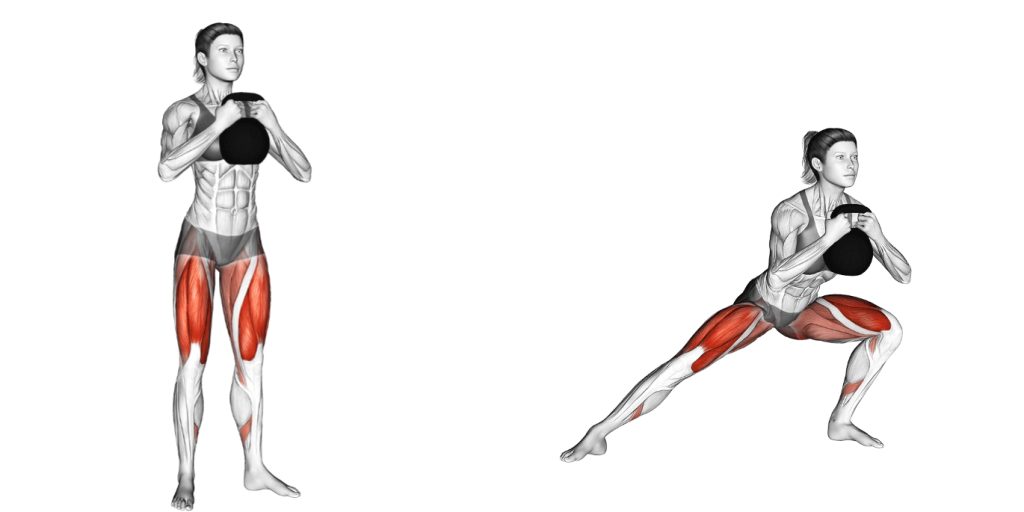
- How to Do:
- Stand tall with feet together.
- Take a big step directly out to your right side. Land with your right foot flat.
- Immediately push your hips back and bend your right knee, lowering your body down. Keep your left leg relatively straight – you should feel a strong stretch along your left inner thigh.
- Keep your chest up and your weight centered over your right foot. Don’t let your right knee cave inward!
- Drive powerfully through your right heel, pushing yourself back to the starting position. Squeeze those inner thighs as you come together.
- Repeat on the left side. That’s one rep.
2.5 Wide Stance Squat
Similar to the Sumo Squat but often done with a more moderate wide stance or holding a weight like a kettlebell or dumbbell close to your chest (Goblet style). It remains an excellent compound lift that heavily recruits the adductors for stability and power throughout the entire range of motion.
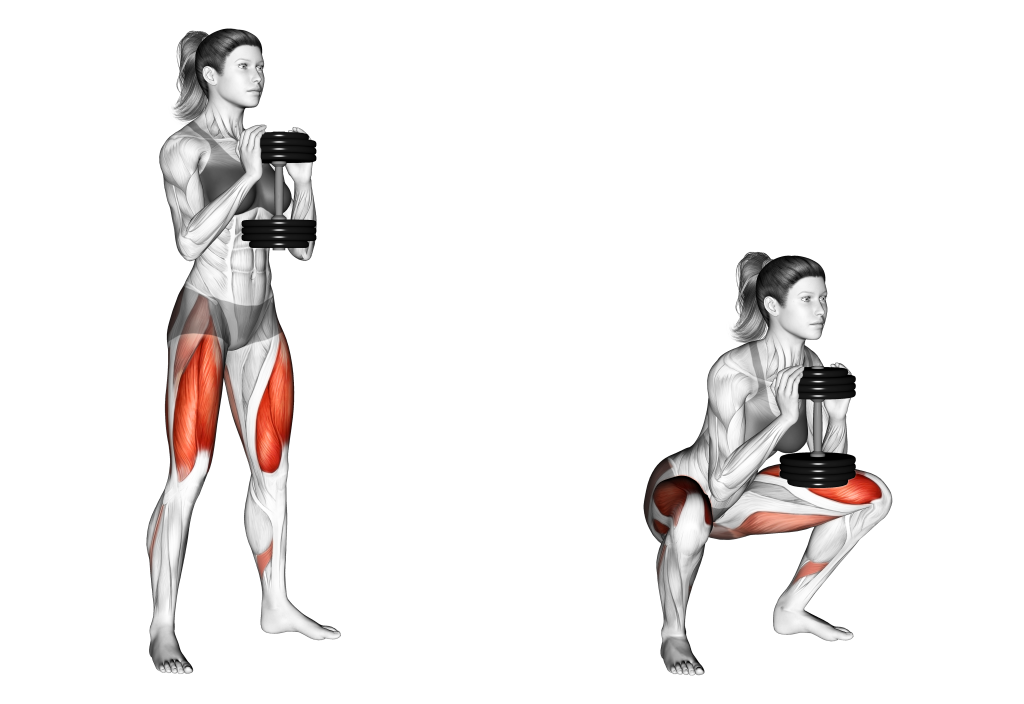
- How to Do:
- Stand with feet comfortably wider than shoulder-width, toes pointed slightly outwards.
- (Optional) Hold a dumbbell or kettlebell vertically against your chest (Goblet position).
- Initiate the movement by sending your hips straight back, then bend your knees to lower down. Aim for depth while maintaining a strong, upright torso.
- Descend under control, feeling the stretch and engagement in your inner thighs.
- Drive up powerfully through your entire foot, emphasizing pushing the floor apart slightly to really fire up those adductors. Stand tall at the top.
2.6 Side-Lying Leg Lifts
Don’t underestimate this bodyweight gem! It’s fantastic for isolating the adductors, especially the upper fibers, and building endurance. It’s incredibly accessible and perfect for finishers, rehab, or adding in on lighter days. You’ll definitely feel the burn.
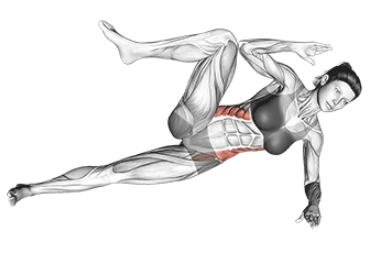
- How to Do:
- Lie on your right side, body in a straight line. Rest your head on your right arm or hand. You can bend your bottom (right) leg slightly at the knee for stability if needed, keeping the top (left) leg long and straight.
- Engage your core to prevent rocking. Slowly raise your top (left) leg as high as you comfortably can without rotating your hips backward. Focus purely on lifting from the inner thigh.
- Hold the peak contraction for a brief moment – really feel that inner thigh muscle working.
- Slowly lower your leg back down with control, resisting gravity all the way. Don’t just let it drop! Repeat all reps on one side before switching.
3. Adductor Muscles Training Considerations
- Proper Form is Non-Negotiable: If your form breaks down, you’re not effectively targeting the adductors, and you’re inviting injury. Pay close attention to knee alignment (no inward collapsing!), maintaining a strong core, and moving through the full range of motion your mobility allows. Watch yourself in a mirror or record a set. Quality over quantity, always. Bad form sets you back.
- Embrace Progressive Overload: Your body adapts. To keep getting stronger, you need to gradually challenge it more over time. That doesn’t always mean piling on weight. It could mean: adding resistance (bands, weight), doing more reps with good form, increasing your sets, slowing down the tempo (especially the lowering phase), or reducing rest time between sets. Pick one variable at a time and progress steadily.
- Find Your Frequency: Adductor muscles training 2-3 times per week is generally the sweet spot for most folks. This gives them enough stimulus to grow and strengthen while allowing crucial time for recovery. Don’t hammer them hard every single day – muscles grow when they rest! Space these sessions out, maybe pairing them with other leg work or upper body days.
- Warm-Up & Cool-Down are Essential: Don’t skip these! Before your workout, get blood flowing with 5-10 minutes of light cardio (jogging, cycling), then focus on dynamic mobility: leg swings (front-to-back and side-to-side), deep bodyweight sumo squats, lateral lunges, and hip circles. After your workout, when muscles are warm, do static stretches: hold a deep sumo squat stretch, butterfly stretch, or a seated straddle stretch for 20-30 seconds per side.
Start incorporating these 6 adductor muscles training exercises – focus on killer form, be patient with progressive overload, and never skip your warm-up or ignore what your body tells you. Consistency with smart training is your golden ticket. Trust the process, feel those inner thighs engage, and watch your overall strength and movement quality soar. You’ve got this! Now get out there and build that foundation strong.
Welcome! I’m Jordan Mitchell, the dedicated editor at Leadman Fitness, where we specialize in manufacturing high-quality bumper plates, barbells, weight machines, kettlebells, and dumbbells. With a passion for fitness and a keen eye for detail, I ensure that our product information is clear, accurate, and engaging for our customers. My role involves collaborating closely with our design and production teams to highlight the innovative features and superior craftsmanship that set Leadman Fitness apart in the industry. Whether you’re a professional athlete or a fitness enthusiast, I’m here to provide you with the information you need to achieve your training goals with our top-of-the-line equipment.
